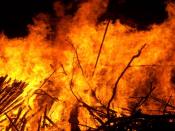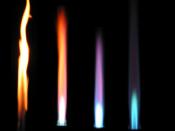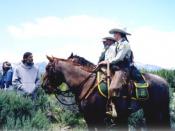Introduction Fire is a topic on which most people can comment. Fire is a widespread phenomenon. Most of us have seen fires in natural vegetation, or their effects; stark, blackened vegetation or a smoke pall. Because fires such as these can have damaging economic and social effects, can spoil forestry timber, can burn down houses and farms, and can kill people and animals, there has been a lot written about wildfires. Added to this wide perception of the damage that can be caused by wildfires, there has been increasing publicity given, since the 1950's, to the active use of fire as a management tool, particularly in protecting against severe wildfires. The introduction of a policy of deliberate burning as a management tool has a fascinating history, especially in the United States Forest Service, but the ecological effects of prescribing a fixed burning regime on large tracts of land are increasingly being questioned (Lyons, 1985, 3).
To an ecologist, fire can be treated as just one of the many factors in an environment. It compares with droughts, floods, hurricanes and other physical disturbances because of the direct impact it makes on organisms. Unlike these physical factors, however, fire as a disturbing force is itself influenced by the biota, particularly the plant community. Alteration of the vegetation by any number of factors can influence the nature of a subsequent fire. Fire has similarities to grazing as a force on vegetation because of such feedback effects (Whelan, 1995, 20).
Fire History When cavemen learned to make and use fire, they could start to live in civilized ways. With fire, they were able to cook their food so that it was easier to eat and tasted better. By the light of torches, men could more easily find their way at night. They could also...


